A part of a circuit in steady state along with the currents flowing in the branches,the values of resistances,etc, is shown in figure.Calculate the energy stored in the capacitor.
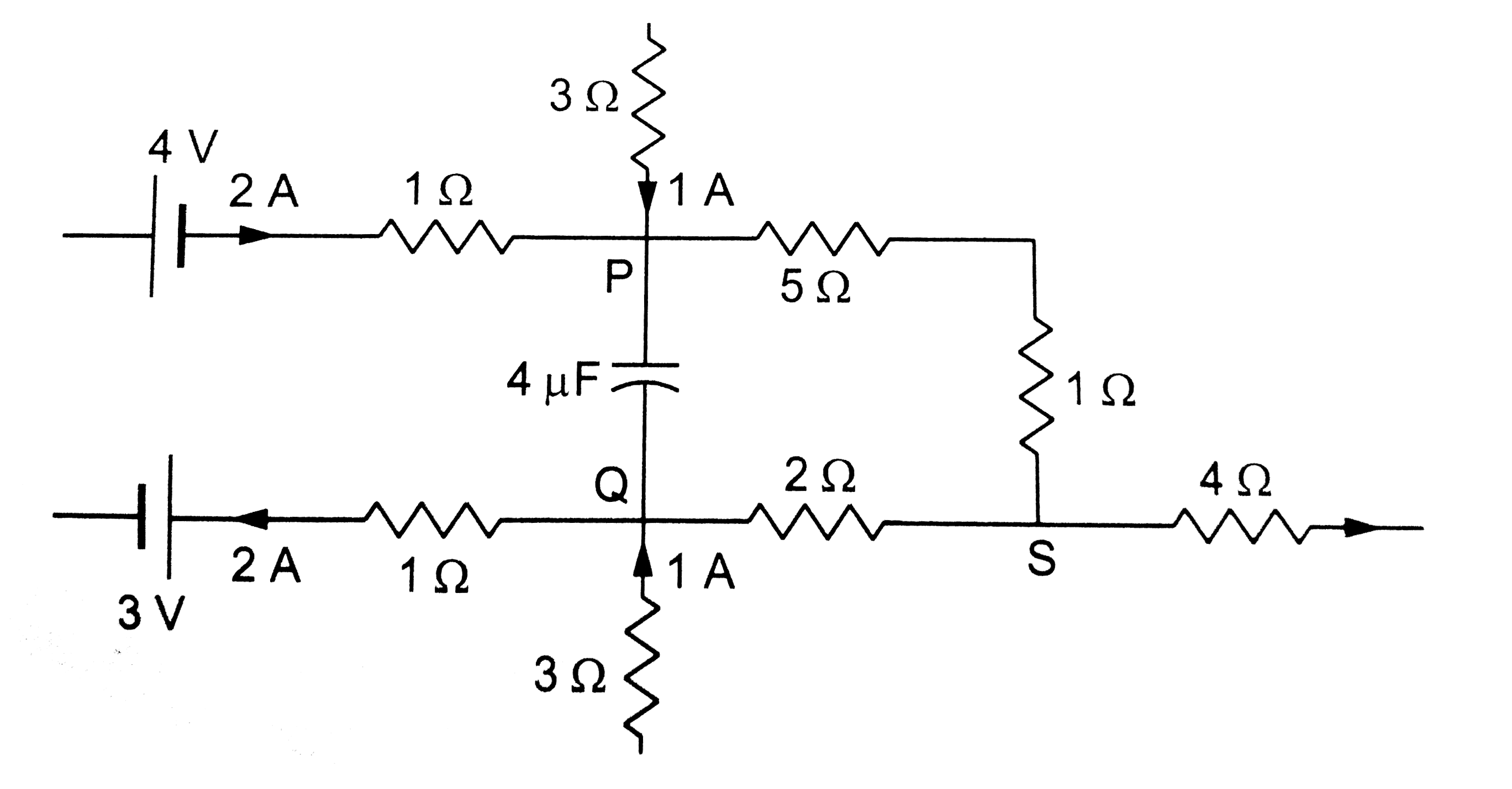
To get the energy stored in the capacitor,we shall calculate the potential difference between the points P and Q. In steady state, there is no current in the capacitor branch. Applying Kirchhoff's junctions law at P, the current in the (5Ω−1Ω)branch will be 3 A and hence
VP−VS=(6Ω)×3A=18V.
Applying the same theorem at Q, the current in the (2Ω)resistor will be 1A towards Q so that
VS−VQ=(2Ω)×1A=2V.
Thus,VP−VQ=(VP−VS)+(VS−VQ)=20V.
The energy stored in the capacitor=12CV2=12×4(μ)F×400V2
800(μ)J.
Topper's Solved these Questions
- ELECTRIC CURRENT IN CONDUCTORSBook:HC VERMAChapter:ELECTRIC CURRENT IN CONDUCTORSExercise:worked out Example
Explore 1 Video
- ELECTRIC CURRENT IN CONDUCTORSBook:HC VERMAChapter:ELECTRIC CURRENT IN CONDUCTORSExercise:Short Answer
Explore 17 Videos
- ELECTRIC CURRENT IN CONDUCTORSBook:HC VERMAChapter:ELECTRIC CURRENT IN CONDUCTORSExercise:Exercises
Explore 84 Videos
- DISPERSION AND SPECTRABook:HC VERMAChapter:DISPERSION AND SPECTRAExercise:Exercises
Explore 11 Videos
- ELECTRIC CURRENT THROUGH GASESBook:HC VERMAChapter:ELECTRIC CURRENT THROUGH GASESExercise:Exercises
Explore 23 Videos
Similar Questions
A part of circuit in a steady state along with the currents flowing in the branches, the values of resistance etc., is shown in the figure. Calculate the energy stored in the capacitor C (4muF)
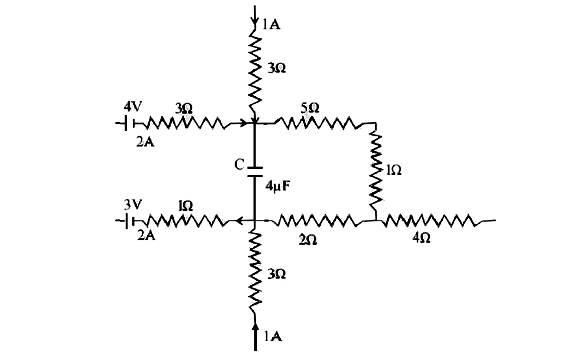
View Solution
A part of the circuit in a steady state along with the currents flowing in the branches, the values of resistance, etc. is shown in the figure. Calculate the energy stored in the capacitor.
View Solution
Knowledge Check
A part of a circuit in steady state along with the currents flowing in the branches,the values of resistances,etc, is shown in figure.Calculate the energy stored in the capacitor.
 A8×10−1JB8×10−2JC8×10−3JD8×10−4J
A8×10−1JB8×10−2JC8×10−3JD8×10−4JA part of a circuit in steady state with the currents flowing in a braches , the value of resistance etc is shown in the figure.
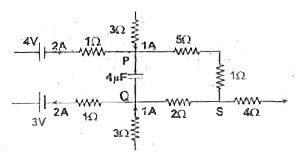
Charge on the capacitor isA10μCB80μCC20μCD40uCA part of a circuit in steady state with the currents flowing in a braches , the value of resistance etc is shown in the figure.
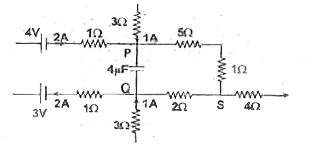
Potential difference between points P and Q.isA10 VB20 VC30 VD35 V
A part of a circuit in steady state along with the currents flowing in the branches,the values of resistances,etc, is shown in figure.Calculate the energy stored in the capacitor.

View SolutionA part of a circuit in the steady state with the currents flowing in the branches and the values of resistance are shown in figure. Calculate the energy stored in the capacitor C=4μF.
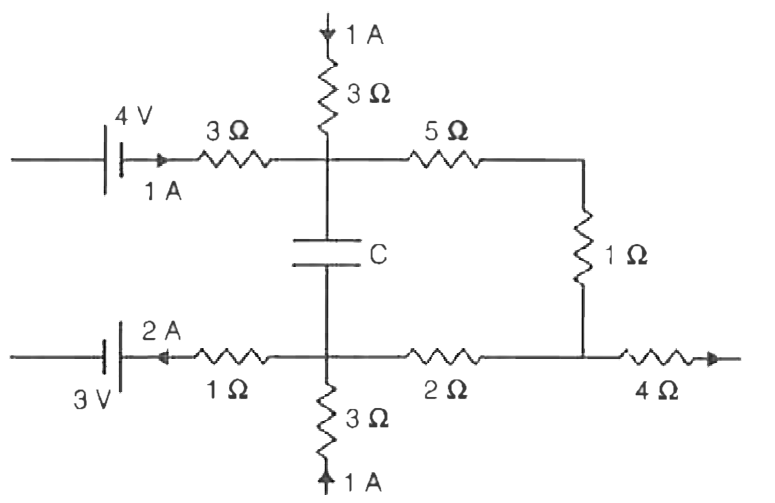
View SolutionA part of circuit in a steady state along with the current flowing in the branches, the values of resistance etc., is shown in the figure. How much energy (μJ) stored in the capacitor C (0.4μF)
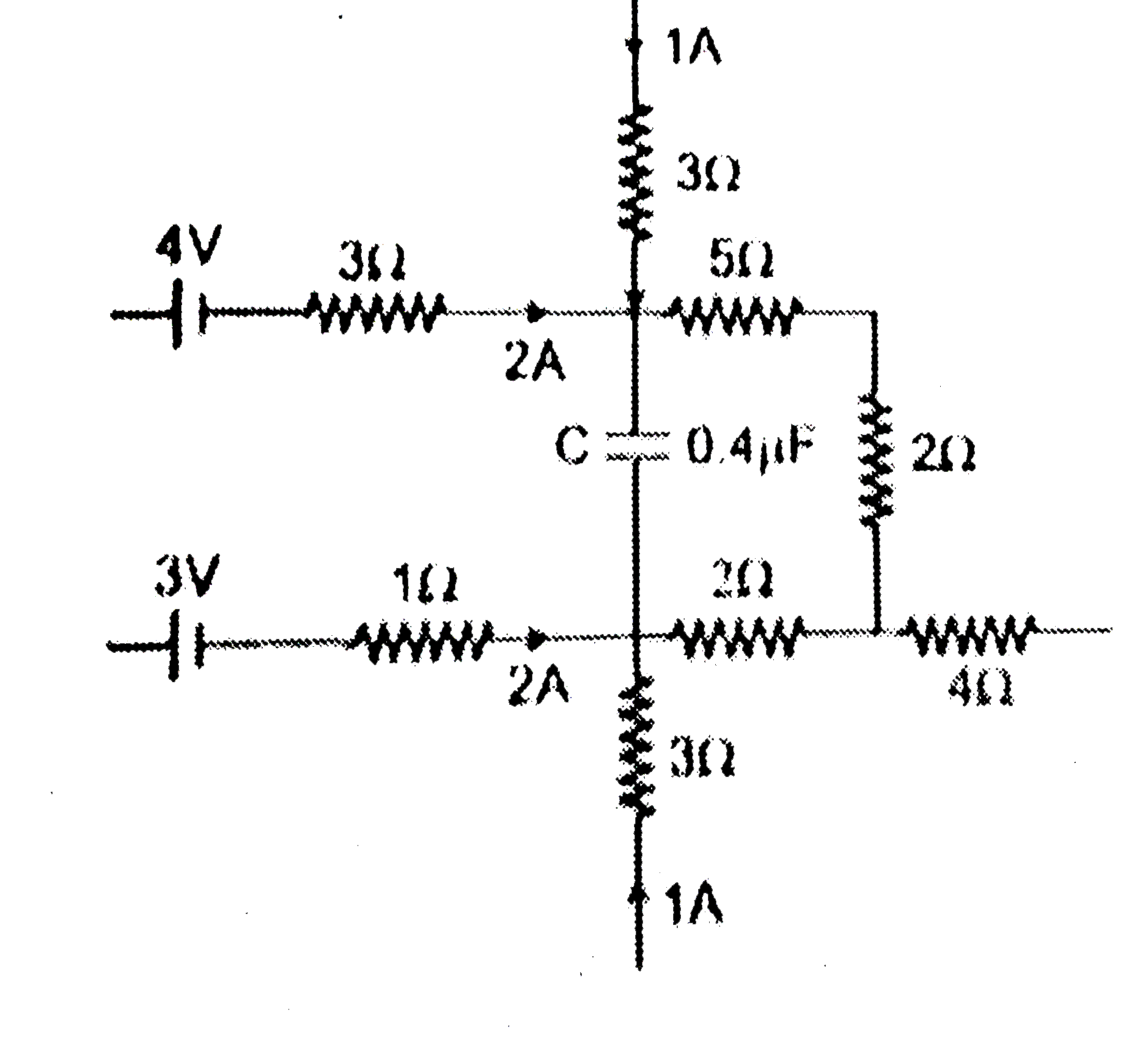
View SolutionA part of a circuit in steady state with the currents flowing in a braches , the value of resistance etc is shown in the figure.
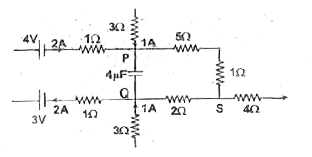
Current in the 2Ω resistor is
View Solution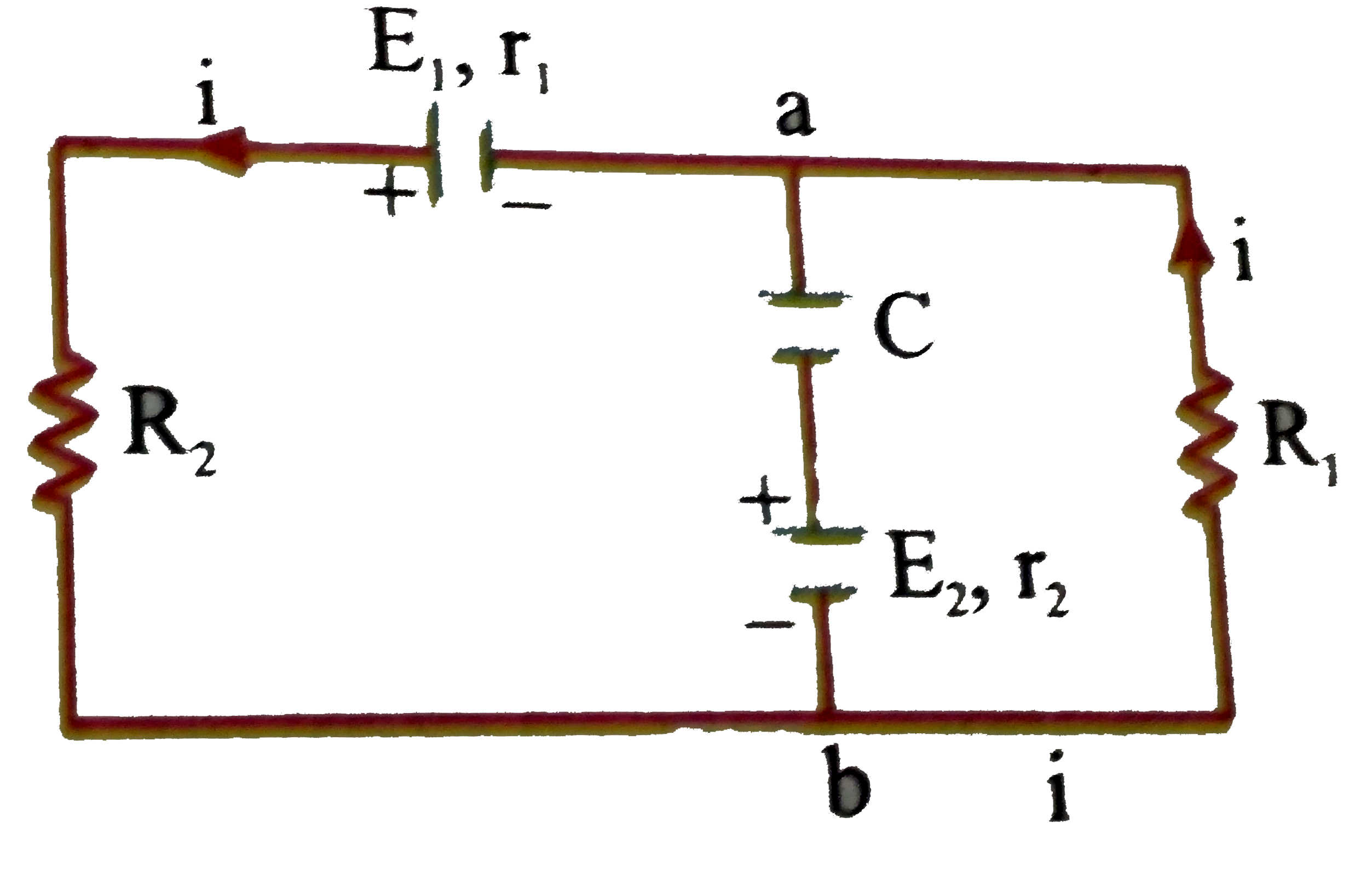
In the steady state, the energy stored in the capacitor is:
View Solution